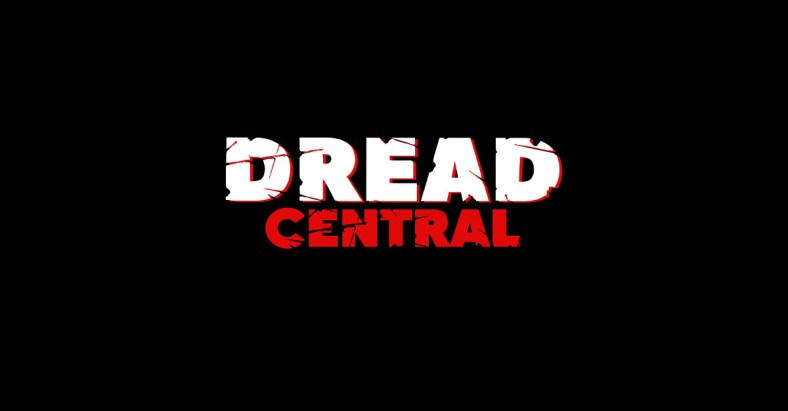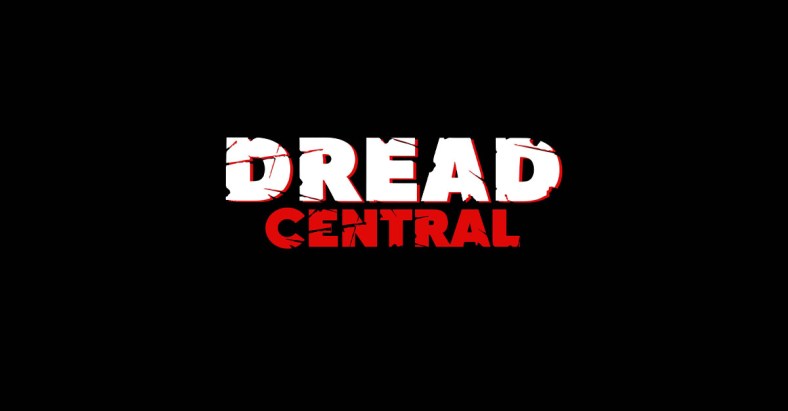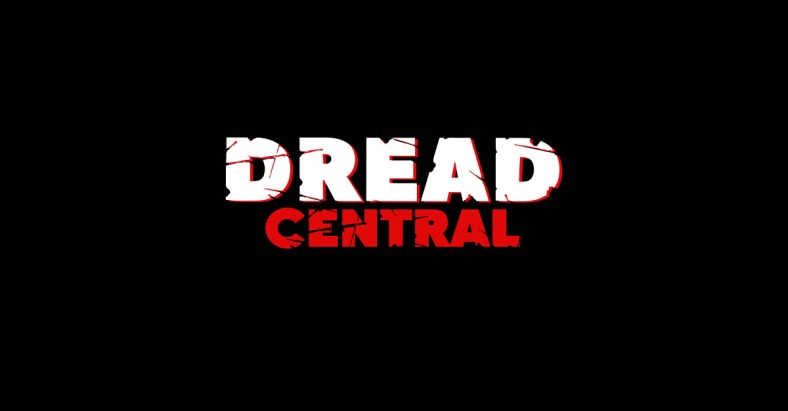Small Screens, Big Scares: 10 More Terrifying TV Movies

In June of last year, I highlighted my favorite made-for-television horror movies. The response was somewhat divisive, in large part on account of the perceived snubs (sorry, Salem’s Lot fans). It’s curious, though, because made-for-TV horror movies are, in a sense, a subgenre of their own. Shades of Aaron-Spelling’s heyday, even among those titles he did not produce, permeate almost every entry in the canon of televised scare fests. Despite the diversity– some muted and washed-out, some vibrant and lively, others adapted from seminal pieces of genre fiction– there’s something linking them all together.
Related Article: Top 10 Made-For-TV Horror Movies
Perhaps it’s the nostalgia of it all, a feeling that endures even to this day on grainy digital streams and barren DVD reproductions. Or, perhaps, it’s the communality. In the Golden Age of Content, there are few, if any, watercooler media texts. Made-for-television movies, moreover, are a dying breed, supplanted by high-profile and ceaseless streaming outputs, Hulu acquisitions, and Netflix Originals. Little that’s available can match the sheer fellowship of watching the same scary movie, at the same time, on the same network.
That being said, it feels both appropriate, and necessary, to revisit the list in an effort to further fill it out with ten additional made-for-television horror movies. Unlike last time, these entries will be listed in no particular order. All, though, are worthwhile movies in their own right. Compelling and nostalgia-fueled lenses into a time where horror dominated the Big Three and video rental stores. A time where horror was both subversive and bookish, high-concept and high-profile. A time where horror reigned.
10). Salem’s Lot (1979)
Based on Stephen King’s second published novel, Salem’s Lot– alongside the first It television adaptation–is hallowed ground. The kind where the antagonistic vampires at the story’s core likely wouldn’t be welcome. Compellingly directed by horror heavyweight Tobe Hooper, Salem’s Lot represents both the best and the worst of Stephen King. And more potently, filmic adaptations of his work.
It took four years for the novel to make it to television. And it will likely take just as long to watch the miniseries from start to finish. Salem’s Lot is indulgent, running 183 minutes, nearly an hour longer than it needed to. Jammed within the exorbitant, Peter Jackson runtime are several genre-defining scares, however, including the infamous scene where Ralphie Glick (Ronnie Scribner) floats outside of his brother’s bedroom. It’s a sensational scare. The kind we simply don’t see enough of today by dint of the deluge of content available. Anyone who remembers Salem’s Lot remembers that scene. When was the last time a horror movie could claim that?
Related Article: Breaking: James Wan’s SALEM’S LOT Remake Snags Director
9). Gargoyles (1973)
When I wrote my first list, I was crucified for not having included (or seen) Gargoyles. I was born in the mid-1990s, so Gargoyles never organically crossed my path. Consider me a fool, then, because when I watched it on account of the feedback I received, I really, really liked it. I’m not sure it would crack the Top 10. But Bill Norton’s horror fantasy about an anthropologist and his daughter who stumble across a colony of gargoyles in the Southwestern United States is a frightening and fun affair. One elevated by Stan Winston’s special effects work. The plot is streamlined and kitschy. And the pyrotechnic finale features the kind of escalation 70s genre projects were infamous for. Come for the retro charm, stay for the killer gargoyles.
8). The Woman in Black (1989)
Closer in Eel Marsh spirit to Susan Hill’s novel than 2012’s Hammer offering, 1989’s The Woman in Black is a low-key, quietly haunting affair. There are no jumps or sudden cuts to screaming visages. Violence is kept to a minimum. Barring the ludicrously over-the-top final twist wherein there are no fewer than fifty shots (I kid you not) of the same collapsing tree. Director Herbert Wise opts instead to relish the seductively gothic template of Hill’s original work.
Adrian Rawlins capably plays London solicitor Arthur Kidd. He’s a young man tasked with visiting the coastal market town of Crythin Gifford to prepare the estate of the deceased Alice Drablow. Spooks and superstition abound, with Arthur Kidd, in the gothic tradition, remaining conventionally incredulous until it is far too late. It aired on ITV on Christmas Eve 1989 (unpack some ghoulish specters this holiday season). The Woman in Black doesn’t reinvent the haunted house subgenre. But it still represents a patient, classic, and sophisticated tale of man versus aggrieved ghost.
Related Article: THE WOMAN IN BLACK (1989) Review–Available on Blu-ray for First Time October 12th
7). Ghostwatch (1992)
I will sing the praises of Stephen Volk’s horror mockumentary Ghostwatch until the day I die. And am promptly resurrected by a televised séance spearheaded by myopic skeptics and cheeky broadcast personalities. That, truly, is the dream. Ghostwatch is an early precursor to the kind of “is it or isn’t it real” horror tradition best popularized by 1999’s The Blair Witch Project. Dual storylines follow both a televised séance in-studio and the on-the-ground camera crew staying overnight in a Northolt suburb where poltergeist activity had been reported. Initially innocuous, Ghostwatch progressively darkens as the mythology of Mother Seddons and the ghost nicknamed Pipes reveal themselves.
The finale is beyond frightening. The kind of pitch-perfect escalation that contributed to ceaseless complaints to the BBC and, speculatively, one real-life death. In recent years, the mythology of Ghostwatch– including reports of new Pipes sightings in-film– has threatened to overshadow the movie itself. Whatever the case may be, and whatever its legacy is, Ghostwatch is still one of the finest examples of made-for-television horror ever produced.
Related Article: GHOSTWATCH: Still One of the Scariest Movies Ever Made
6). The Dark Secret of Harvest Home (1978)
One of the last century’s best horror novels– I will die on the hill that it is Tom Tryon’s fiercest work– was adapted into one of its better made-for-tv horror movies. Like Salem’s Lot, what worked in prose proves difficult to adapt cinematically. The Dark Secret of Harvest Home is similarly too long – 228 minutes in its original form. And uncertain of what, exactly, it wants to be. Is it a paranoid thriller? A domestic drama? A folk horror film?
It’s all of those things. But the paranoid folk landscape of isolated Connecticut village Cornwall Coombe proves sufficiently engaging. Moreso than the insipid tension between new arrivals Nick and Beth Constantine (David Ackroyd and Joanna Miles, respectively). Not to mention their daughter, Kate (Rosanna Arquette). She turns in what’s truly one of the decade’s worst performances. But that’s less on account of Arquette (a talented actress, see: After Hours). It’s more on account of just how awful Kate Constantine is as a character. With a four-hour runtime, The Dark Secret of Harvest Home is a simultaneously terrifying and plodding movie. One that never fully takes advantage of its best aspects. Like Tryon’s Lovecraftian cult imagery and Bette Davis’s performance as the Widow Fortune. Still, enough of it works. Time permitting, don’t be afraid to let the deceptively quaint hamlet of Cornwall Coombe seduce you.
5). A Cold Night’s Death (1973)

The twist at the end of A Cold Night’s Death is no less ridiculous than the one recently seen in John Patrick Shanley’s Wild Mountain Thyme. Both involve animals and both are predicated on a pretty steep level of disbelief. Two scientists (Robert Jones, Frank Enari) suspect there’s someone else living in their cloistered quarters. All while staying at a remote arctic research station.
Chiefly a two-man show, director Jerrold Freedman maintains an elevated, theatrical paranoia throughout. It’s an early precursor– minus the action and SFX– to John Carpenter’s The Thing. Brought to the station on account of cryptic, delirious radio relays from scientist Dr. Vogel (Val Adams), both men vacillate between fear of the other and fear of the unknown, and that fear is palpable. Then, the twist occurs, and audiences are primed to either reject or embrace it entirely– there is no room for nuance here. Wherever one stands, A Cold Night’s Death is scarier than most televised horror movies– it will chill you to the bone.
4). Nightmare on the 13th Floor (1990)

Few television movies opted for the “less is more” narrative approach. Too often, the plots were convoluted and jam-packed with enough genre iconography to confound even the most ardent of horror fans. Luckily, Walter Grauman’s Nightmare on the 13th Floor is little more than a slice-and-dice slasher. Albeit one made for television, in both content (there are no graphic deaths here) and structure.
Like a gnarlier and grislier episode of Murder She Wrote, Michele Greene stars as Elaine Kalisher, a travel reporter charged with investigating the disappearance of several hotel guests and the swirling rumors of an unmarked 13th floor where a murderer may or may not be on the loose (spoiler: the murder is definitely there). The chase scenes are visceral, the set design drips with urban Gothicism, and despite its release in 1990, it feels right at home alongside the fabulous ‘80s slasher of yesteryear. Don’t be afraid, book a room on the 13th floor.
3). A Warning to the Curious (1972)

A Warning to the Curious is adapted from M.R. James’s 1925 ghost story of the same name. Part of BBC’s A Ghost Story for Christmas package of TV movies that ran from 1971 to 1978, it sometimes includes the BBC adaptation of another James ghost story, Whistle and I’ll Come to You. Peter Vaughn stars as Mr. Paxton (his character a stark departure from James’s original protagonist), an archeologist who travels to the English coast in search of a fabled crown that is said to have protected Great Britain against past invasions. Upon retrieving the crown, Paxton is stalked by the treasure’s supernatural guardian. Short, sweet, and terrifying, A Warning to the Curious is truly a diamond hidden in the rough. Dig this crown up, phantoms of the coast be damned.
2). When a Stranger Calls Back (1993)
The following point might be controversial, but it must be said. The opening act to Fred Walton’s follow-up to 1979’s procedural classic When a Stranger Calls is superior in most every way to the first. When a Stranger Calls is two movies in one, a stellar opening and ending act with a dull, tonally inconsistent procedural middle. If Carol Kane isn’t on screen, little else matters. Luckily, When a Stranger Calls Back has lots of Carol Kane. More Carol Kane than anyone with a Showtime subscription in 1993 thought they needed. It also has scream queen Jill Schoelen (of Popcorn and The Stepfather fame) in a profoundly empathetic performance, evocative of some of the genre’s stalwarts.
Walton wisely keeps the focus on both Kane and Schoelen, eschewing the first Stranger’s mid-movie stumble for a more focused, taut exercise of unknown caller and mouse. To return to the introduction, little in the years since has matched Schoelen’s slow unraveling as a woman tasked with babysitting two young children while menaced by a man outside. Or is he? Clocking in at nearly twenty-seven minutes, the opening act is unbearably tense and calibrated with perverse glee. The tension and threat level steadily rise until a final reveal that blows Kane’s 1979 torment out of the water. When this stranger calls back, be certain to answer.
1). I Saw What You Did (1988)

Fred Walton strikes again with another killer TV movie. I Saw What You Did is not only terrifying in that distinctly ‘80s “telephones are frightening portents of death” vein, but it’s also curiously educational. The only reason I know not to describe myself as feeling “badly” is because Shawnee Smith (of Saw fame) reminds me that “feel” is a linking verb, and linking verbs are modified with adjectives, not adverbs. Thanks, Shawnee.
Shawnee Smith stars as Kim Fielding, a young woman who unwisely tells an actual killer that she saw what he did in a prank call gone wrong. A remake of the 1965 Joan Crawford original, Fred Walton’s rendition is grungier and sleazier in all the best ways. I Saw What You Did also stars Candace Cameron Bure is a role that belies her endearment on Full House, which, if nothing else, makes for a fun game of shouting, “Hey, that’s DJ” every time she’s on-screen.
The entire enterprise feels dangerous, rare for a television movie, and has a great deal to say about the constraints around young women’s sexuality and the dangers in barring them from negotiating it on their own. There’s little outright horror– the finale comes and goes by in a blip– but the undercurrent of menace is enough to make this one worth a watch. I saw what you did, and guess what? I liked it.
***
What are some of your favorite horror TV movies? Can you think of any horror TV movies we missed? Make sure to let us know in the comments below or continue the horror TV movies conversation with us over on Facebook, Twitter, or Instagram!
Categorized:Editorials News
